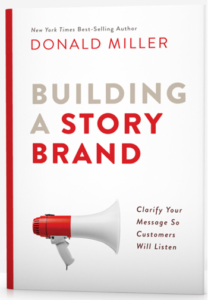
The Rule of One vs. Listicles: What’s the Deal?
One of the ideas I’ve written about over the years is something I called the “Rule of One.” It wasn’t an original idea. It was a compilation of similar ideas that I rolled into one package and recommended as a useful tool for all sorts of projects and challenges. And it was the subject of a question I received last week from JW:
“Ever since I discovered your Rule of One, I’ve been trying to use it with my writing and video content. While I find it easy to focus on one individual theme or topic, I always seem to run into the same problem: I rely on listicles or try to include several tips instead of focusing on one. As an example, my video titles always end up being something like ‘5 Ways to XYZ’ or ‘3 Big Mistakes with XYZ.’ I want to provide as much value as I can, but it feels like I’m violating your rule when I do it this way!
“Do you have any suggestions for me? Are listicles something I should avoid altogether, or do they serve a purpose?”
This is something I’ve been meaning to write a book about for some time. In case I never get to it, here’s the short version:
The Rule of One is not meant to be a straitjacket. It provides focus and clarity, from which you get a kind of forward motion that you can’t get any other way.
In my books about entrepreneurship, I recommended it as a way to maximize the odds of building a successful business. In my writings about personal development, I favored it as a way to make quick progress in learning a language or developing a skill. In any challenging endeavor, the Rule of One will help you get past the common hurdles that slow down and eventually stop people from accomplishing difficult goals.
JW’s question was about writing – applying the Rule of One to writing essays, blog posts, and the like. And where “listicles” fit in.
Here’s what I think:
Listicles are great for creating curiosity and motivation, and for helping your reader understand the breadth of a given topic (the number of things that could or should be considered). If, for example, you want to write a piece about retiring overseas, you might create a listicle about the 10 best seaside retirement locations or the 10 best mountain locations or the 10 least expensive places to live, etc.
What we’ve found in publishing thousands of essays and blog posts over the years is that listicles are good at attracting attention and holding it for the several minutes it takes to read through the listicle. We know this because we track reader response to marketing copy, and the “open” and “click-through” rates of listicles are very high.
Readers like listicles because they are generally quick and easy to read. And as a rule, they are easy to write. The research takes a bit of time. But composing the list is usually quick.
Easy to write. Easy to read. Listicles are light fare – comfort food for the curious mind.
So, if you want high consumption rates on your blog posts, listicles are a good way to go. They will get you eyeballs, and that is nothing to sneeze at. (I publish them occasionally myself, when I come across one that catches my eye – one that I think my readers will like.) But they won’t get you avid followers or fans.
That’s because listicles cannot do what a single focused essay can. They cannot do the heavy work of explaining anything that is complicated or profound. They cannot change your reader’s world view. They cannot change how your reader views himself.
If you want a deeper relationship with your readers, you must dig deep. You must take them somewhere they’ve never been. And that is what we writers must do if we expect our readers to want to read more of what we want to say.
Note: My comments about listicles to not apply to lists. It’s perfectly okay to include lists in an essay that is singularly focused. It’s okay, for example, in an essay whose purpose is to argue that inflation is going up or down, to include 10 reasons why.
But as I said, listicles can’t do the hard work of writing. Because the hard work of writing is thinking. Not just lateral, superficial thinking (the kind you do when you compose a listicle), but vertical thinking. Digging into your subject.
If you want to get serious about any topic, you must give your reader an idea that is in some way different and in some way deeper than the ideas he already has. And the only way you can do that is by spending hours reading, researching, and thinking about the ideas you are coming up with before you open your laptop and put your fingers on the keyboard.
Listicles are horizontal. Wide but shallow. Rule of One essays are horizontal. Narrow but deep.
If your goal is to attract attention, listicles are a good way to go. But if your goal is to change a mind and develop a loyal reader, you must go deep.





